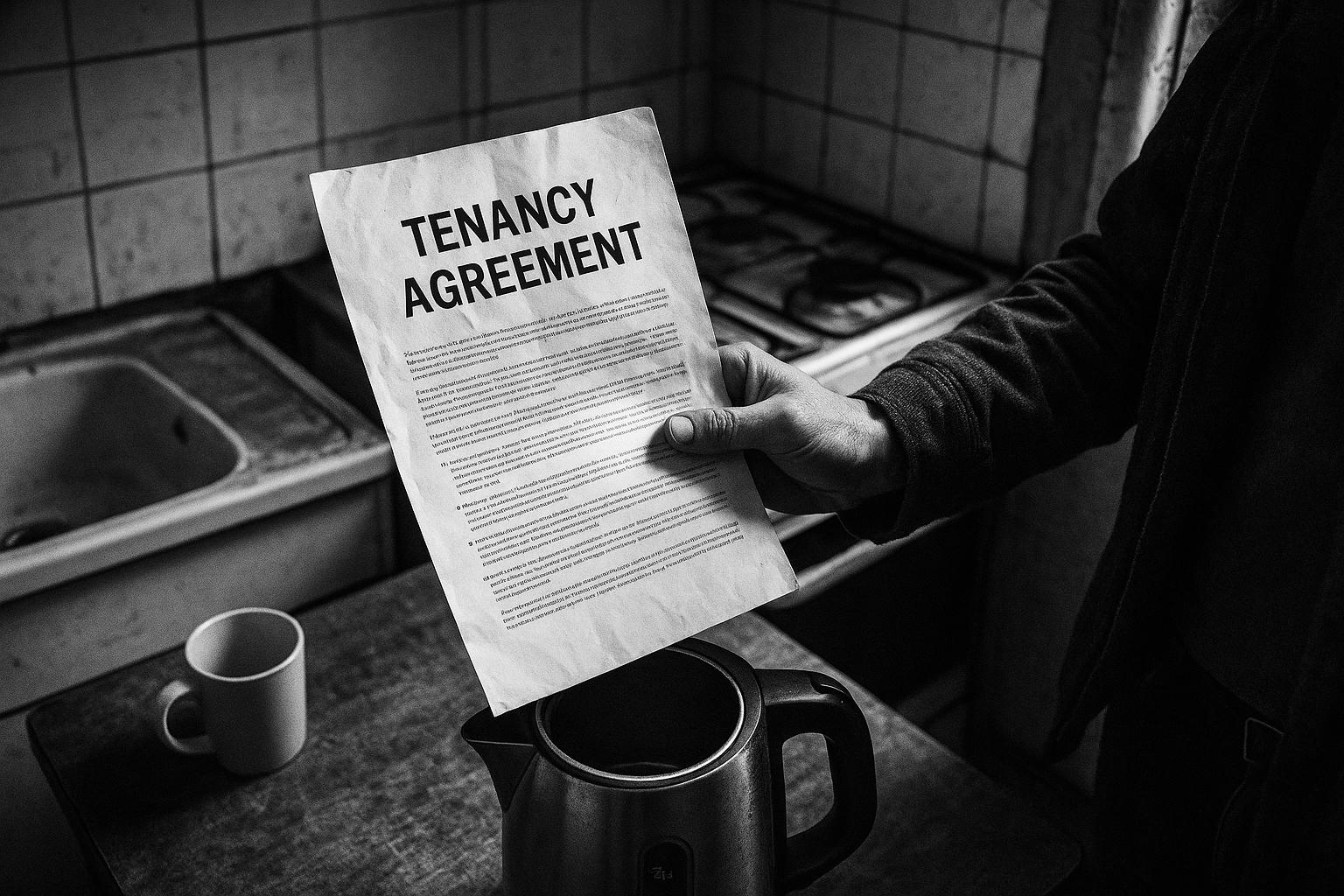Renters in England are facing a fast‑worsening affordability squeeze, official figures published this week show. According to the Office for National Statistics’ private rental affordability bulletin for the financial year ending 2024, tenants on median incomes in England would spend 36.3% of their earnings on an average‑priced privately rented home — a rise from 34.2% the previous year — with London the most pressured region where the average share reaches 41.6% and average rents sit at about £1,957 a month.
The ONS measure uses a 30% rent‑to‑income threshold as an affordability benchmark; the new data show that threshold being breached across swathes of the country and that the problem is particularly acute in London. All of the capital’s 32 local authority areas were above the 30% affordability line for eight of the nine financial years to 2024, and the ten least affordable council areas are all in London — led by Kensington and Chelsea, where someone on a median income would spend around 74.3% of gross pay on rent, followed by Westminster, Wandsworth and Camden.
Outside the capital, several urban centres and commuter belts are also well above the ONS affordability benchmark. The bulletin and contemporaneous industry analysis highlight Bristol, Bath and North East Somerset, Brighton and Trafford among the least affordable areas, while places with significant commuter populations such as Sevenoaks and Watford are registering particularly high rent‑to‑income ratios. By contrast, the north east remains the most affordable English region, with average private rents around £641 a month — roughly 19.8% of median income — and Wales and Northern Ireland show broadly lower ratios on the ONS metric.
The immediate driver is clear in the statistics: rents have been rising faster than incomes. The ONS notes that a period in 2022/23 when wages rose more quickly temporarily eased pressure, but since then the balance has shifted back and the ratio of rent to income has deteriorated. Financial press analysis says rising mortgage and financing costs, together with reduced rental supply and policy uncertainty, are underpinning those upward pressures.
Industry surveys point to how that dynamic operates on the ground. The Royal Institution of Chartered Surveyors’ lettings surveys have recorded steep falls in new rental instructions and a sustained shortage of available stock, while agents continue to report strong tenant demand — a combination that tends to push rents higher as fewer properties come to market. Commentary from market analysts adds that higher costs and regulation are prompting many private landlords to reduce portfolios or sell, further tightening supply.
Campaign groups and housing charities say the human consequences are mounting. Tom Darling, director of the Renters’ Reform Coalition, told The Guardian the figures “show that the biggest issue facing renters — the cost of their rent — isn’t going away any time soon,” and warned that without limits on in‑tenancy increases millions will be effectively pushed from their homes. The coalition’s published analysis argues the government’s current reforms fall short and urges measures such as a national rental affordability commission and tighter controls on rent rises to prevent what it calls economic evictions.
Joseph Elliott, lead analyst at the Joseph Rowntree Foundation, told The Guardian that high rents are “locking people out of secure homes and driving poverty and homelessness,” and the foundation has pressed ministers to end uncertainty over the Local Housing Allowance (LHA), re‑linking benefits to local rental markets and increasing the supply of social housing to tackle the structural drivers of high private rents.
Market commentators echo the warning about shrinking choice. Sarah Coles, head of personal finance at Hargreaves Lansdown, told The Guardian that landlords are “continuing to sell up — concerned about higher costs from more regulation and more tax,” which leaves “more tenants chasing dwindling numbers of properties, so rents are continuing to rise.” Her firm’s analysis highlights how reduced landlord instructions and refinancing pressures have helped push up private rents even as wages have also increased.
Taken together, the ONS figures and industry data point to an affordability problem that is now national in scale and likely to persist unless policymakers act. RICS’ market commentary suggests further upward pressure on rents if supply continues to shrink, while campaigners urge a mix of immediate protections for tenants and longer‑term measures to boost social and affordable housing. The debate now centres on whether the government will prioritise regulatory levers to constrain rents, step up housing benefit support, or focus on increasing supply — a choice with profound implications for millions of households who already spend a rising share of their incomes on rent.
📌 Reference Map:
- Paragraph 1 – [1], [2], [3]
- Paragraph 2 – [1], [2]
- Paragraph 3 – [2], [3]
- Paragraph 4 – [2], [3]
- Paragraph 5 – [6], [3], [5]
- Paragraph 6 – [1], [4]
- Paragraph 7 – [1], [7]
- Paragraph 8 – [1], [5]
- Paragraph 9 – [6], [3], [4], [7]
Source: Noah Wire Services
